Decades ago, before the use of computers became commonplace, audio editing jobs were done in old-school analog sound studios. Those were the days when even the simplest audio editing task would have to be done by an expert with years of training. The work was tedious and the cost of the equipment was way beyond the reach of the average individual.
But these days, just about anyone can record and edit audio tracks. All you need is a microphone and a laptop with professional audio editing software. Indeed, computer software has played a huge part in this audio revolution. And over the years, they have developed to the point where you can accomplish almost anything with them.
In this article, we would be looking at some of the best audio editing software available. We will also examine the capabilities of each of them, as well as their drawbacks.
Best Audio Editing Software in 2021
- Top Consumer’s Choice: Logic Pro X
- Easy-to-use Music Production Software: Audacity
- Most Popular Free Audio Editing Software: Adobe Audition
- Most Customizable Audio Editing Software: Reaper
- Best Audio Editing Software for Creating Instrumentals: FL Studio
- Best Audio Editing Software for Live Performances: Ableton Live
- Complete Music Production Software: Cubase
- Best Audio Editing Software for Composers: Presonus Studio One
- Easy-to-use Audio Editing Software for Podcasts: Hindenburg Pro
- Best Free Audio Editing Software: Ardour
- Best Audio Editing Software for Collaborations: Avid Pro Tools
Best Audio Editing Software
1. Top Consumer’s Choice: Logic Pro X
Logic Pro X was built with music producers in mind. This software is more of a music production software with audio editing tools. This combination is convenient because it isn’t ideal to use one software for audio editing and another for music production.
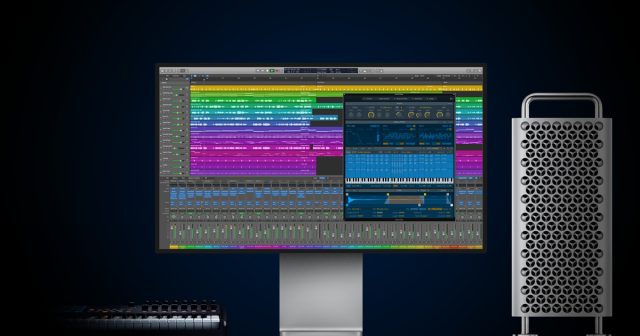
How it works
Logic Pro X allows you to record audio from a microphone. You can also record MIDI tracks. The software also has plenty of virtual instruments ranging from wind and string to percussion. These allow you to compose and add melodies with instrument sounds to your track.
You can also create your playable instruments using the “Sampler” feature in Logic Pro X. This feature allows you to record or import an audio clip which you can use as an instrument sample. You can also edit your samples using the waveform editor.
Logic Pro X has a large collection of effects that you can apply to your audio clips. These include a variety of echoes, filters, and more.
Logic Pro X also comes with a “Logic Remote” feature that allows users to control parts of the software using their iPad or iPhone. With this feature, you can mix audio and even play the instruments from anywhere in the room.
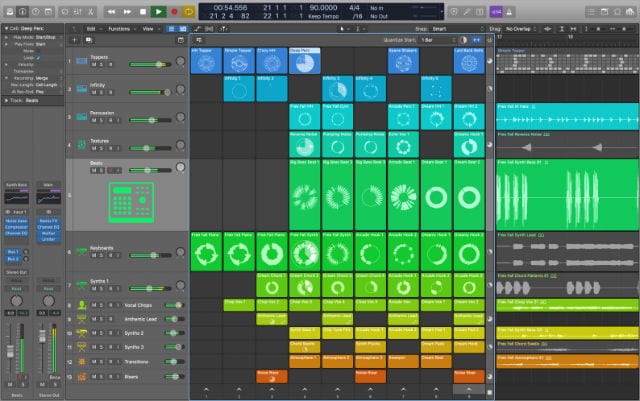
Logic Pro X can be installed on any Apple device running on macOS 10.15.7 or later. Also, the “Logic Remote” feature only works on iPads or iPhones running on iOS 13.1 or later.
Price
You can download and use Logic Pro X for a 90-day free trial period. If after that, you decide to purchase the software, you can do that on the Mac App Store for $199usd. This is a purchase that guarantees free lifetime updates.
Pros
> Clean user interface
> Easy to master and use
> Can be used for both audio editing as well as music production
> Allows you to work using your iPad or iPhone
Cons
> Can only be installed on Mac (no Windows version)
2. Easy-to-use Music Production Software: Audacity
Audacity is a free, open-source digital audio workstation. If you cannot afford any of the other high-end audio workstations, this free audio editor is a good option.
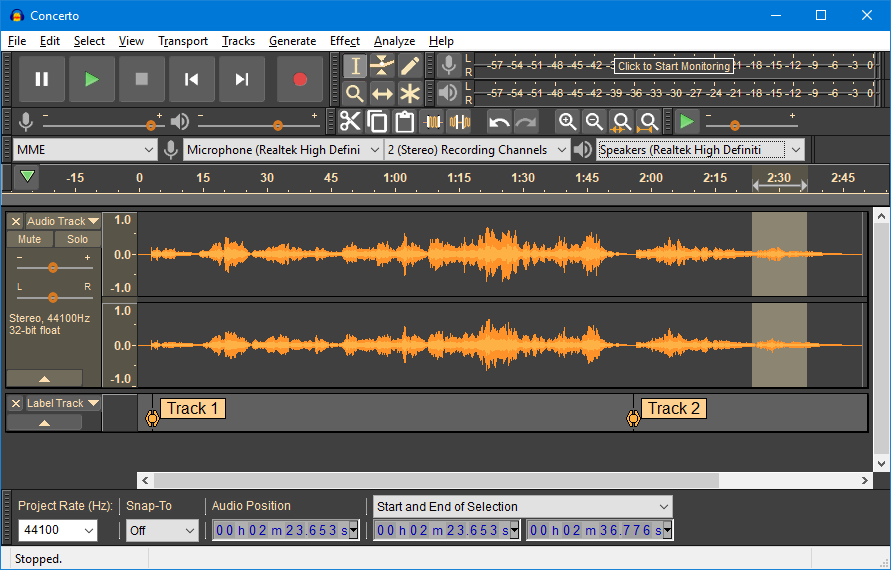
How it works
Audacity is equipped with all of the basic features you would expect to find in an audio workstation. With this open-source software, you can record audio from a microphone. You can also mix audio tracks.
The software allows batch processing which makes it possible for users to process multiple files at once. It also has unlimited undo/redo. This allows you to go back as far as you want.
In addition, this software supports many 3rd party plugins. These include VST, LADSPA, and Nyquist. This makes it possible for you to expand the capabilities of your Audacity software.
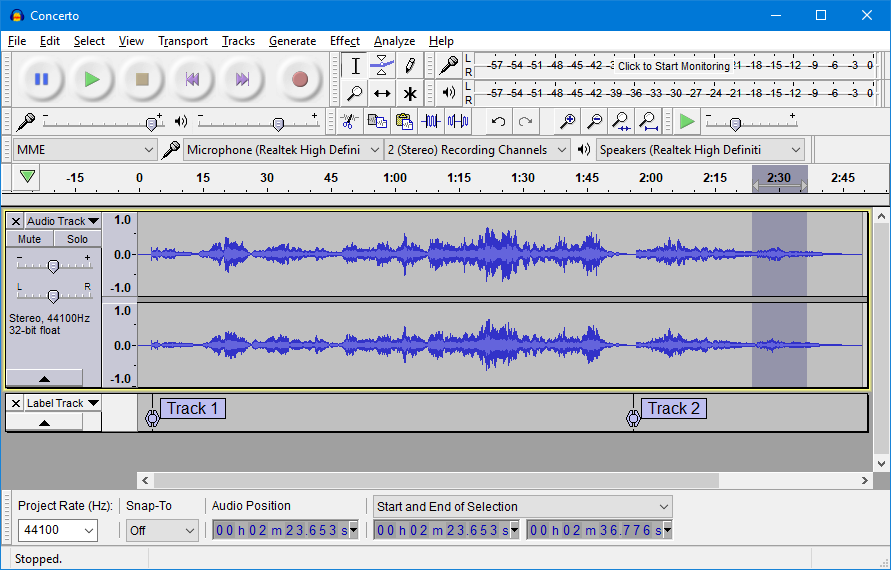
There are also several in-built effects that you can apply to your audio. And due to its plugin compatibility, you can expand the effects library by adding more VST, LADSPA, and LV2 effects.
Audacity can be installed on most operating systems including Windows, macOS, Linux, and others. Audacity can be installed on almost any computer provided there is enough space on the hard disk for the installation.
Price
As we mentioned earlier, Audacity is free of charge. This is made possible by the army of volunteers (including software developers, testers, and translators) who have contributed to the development of this software.
Pros
> Can be installed on most computers (Windows, macOS, Linux, etc)
> Supports many 3rd party plugins (VST, LADSPA, LV2, etc)
> Allows batch processing
> Software is available free of charge
Cons
> Destructive editing
> Lacks some advanced features.
3. Most Popular Free Audio Editing Software: Adobe Audition
Adobe Audition is one of the most complete audio editing software available. The makers of this software have packed every conceivable audio editing feature into it. The software was also built with convenience in mind, as it has features that can save time and effort.

How it works
Adobe Audition allows you to record, create, edit, and mix audio files. The software has one of the most powerful tools for cleaning up recordings. These include features that can strip an audio clip of unwanted sounds and background noise.
Adobe Audition works in two modes – waveform and multitrack modes.
In multitrack mode, you have multiple tracks where you can place audio tracks. Here you can shift the position (timing) of each audio clip on a track. You can also cut or join audio clips, as well as edit each one.
In waveform mode, you can record audio and make adjustments to it. This view has a frequency editor that allows you to modify your recorded audio in many ways.

The software also boasts an impressive array of powerful effects that can alter an audio clip in interesting ways. It also has a batch process feature that allows you to apply presets to a group of audio files at once. So, if for instance, you want to limit the amplitude of some audio tracks, instead of applying the hard limit function on them one after another, you can do it all in one process.
Adobe Audition can be installed on a Windows 10 (64 bit) PC or any macOS version newer than 10.12 (Sierra).
Price
Adobe Audition is available only on subscription. There are 3 subscription plans available:
There is the Annual Prepaid plan which costs $239.88usd per year.
Then, for those who want to commit to a full year’s subscription but want to pay monthly, there is the Annual plan that costs $20.99usd per month. This is the equivalent of $251.88usd annually.
Finally, there is the monthly plan that costs $31.49usd per month.
The software also has a 30-day free trial period.
Pros
> Powerful noise reduction tools
> Large collection of features and effects
> Allows saving of presets and batch processing of sound files
> Good for mixing audio tracks
Cons
> Relatively expensive subscription
> No user manual or help section
> No virtual instruments and tools to create music
4. Most Customizable Audio Editing Software: Reaper
Reaper easily takes the crown as the most customizable digital audio workstation. This is mostly due to its compatibility with several 3rd party plugins. This allows users to extend the collection of audio effects and instruments. Besides that, you can also modify every aspect of the user interface, from menus and toolbars to the color scheme.
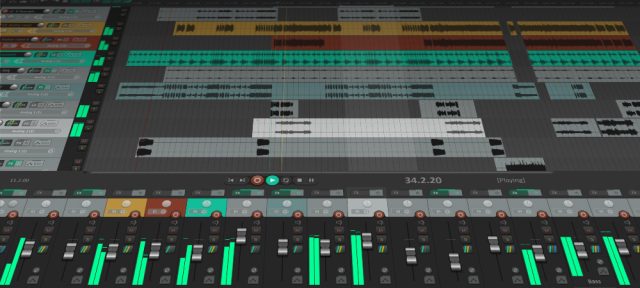
How it works
Reaper has all the features you would expect to see in audio editing software. It allows you to record from a microphone as well as from a MIDI device. You can also mix or edit your audio recording using this software.
Besides these basic features, Reaper also has a reputation for being compatible with almost everything. We had already mentioned its compatibility with many 3rd party plugins and instruments. But apart from that, Reaper is also compatible with a wide range of hardware and can import/render almost all audio file types.
Still, on compatibility, this software has a version for every major operating system (Windows, macOS, and Linux). Reaper can even be installed on devices running on Windows XP.
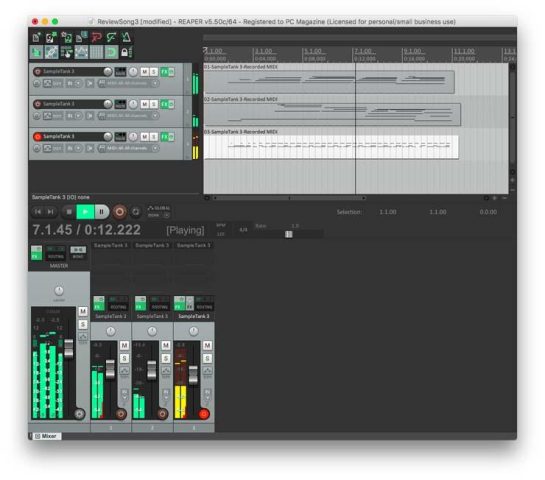
Price
Reaper has a 60-day free trial period. During this period, users of the software have access to all of its features and tools. There are no restrictions whatsoever.
After the free trial period, you can either buy the “Discounted License” for $60usd or the “Commercial License” for $225usd. The Discounted License is for personal use and educational and non-profit organizations. It is also for businesses with annual revenue of less than $20,000usd.
Pros
> Compatible with a wide range of plugins, instruments, and hardware
> Relatively cheap
> Plenty of features and tools
> Very customizable and expandable
Cons
> Has no in-built instruments
> Interface can be a bit confusing for new users
5. Best Audio Editing Software for Creating Instrumentals: FL Studio
FL Studio is probably the best software for creating music instrumentals. No other computer application can bring your musical ideas to life the way FL Studio does. The software is packed with instruments and features for creating instrumentals.
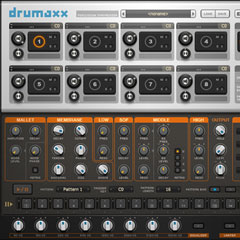
FL Studio can also be used for recording and editing audio. But this is not one of its strong points.
How it works
One of the most exciting things about FL Studio is its large collection of instrument samples and sound effects. As if that is not enough, FL Studio is also compatible with all VST plugins (VST1, VST2, and VST3). This allows you to add even more instruments to FL Studio.
FL Studio also has a “piano roll” that allows you to play its instruments. You can do this using either a MIDI device or by painting notes on the tracks with your mouse. There is no way to describe all you can do with FL Studio’s piano roll. You just have to experience it for yourself!
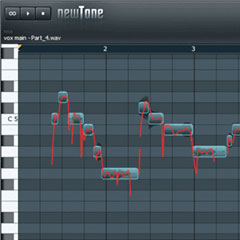
The software also has an advanced mixer for mixing and mastering. This mixer allows you to add audio effects to specific channels or the master track.
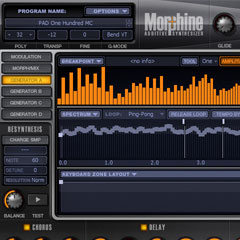
Finally, FL Studio is available for Windows PC users, as well as Mac users. To install FL Studio, you need to have Windows 8.1 or later on your PC. For Mac users, you must have a macOS 10.13.6 (High Sierra) or something more recent.
Price
FL Studio has a free trial version with no time limits. In other words, you can use the free version indefinitely. The only limitation of the trial version is that you cannot open saved FL Studio projects. You cannot even open the ones you previously worked on.
To unlock the full benefits of this application, you will have to buy one of FL Studio’s four editions. Fruity Edition goes for $99usd, Producer Edition for $199usd, Signature Edition for $299usd, and the All Plugins Edition cost $499usd.
6. Best Audio Editing Software for Live Performances: Ableton Live

Ableton Live allows you to make changes to your tracks even during a live performance. New arrangements can be created, some channels can be silenced, and you can change the tempo. And all this can be done while the music is being played live.
How it works
Ableton Live has two views – the Arrangement view and the Session view. In the Arrangement view, you can record using a microphone or from a MIDI device. You can also edit music tracks and apply audio effects.
On the other hand, the Session view was created to support live performances. In this view, you can load audio loops for a live performance. You can also change the arrangement, tempo, and effects of your audio loops during the live performance.
The software also has a vast collection of instrument samples and effects.

You can install Ableton Live on a Windows 10 PC or a Mac running on macOS 10.13 or later.
Price
A free trial version of Ableton Live can be used for 90 days. This free trial version has no limitations and includes all of the features of the full application.
After the free trial period, you can purchase any of the two versions – the Standard and the Suite versions. The Standard version costs $449usd and the Suite version costs $749usd.
Also, there is a 40% educational discount that allows students and teachers to purchase the Standard version for $269usd and the Suite version for $449usd.
Pros
> Great for live performances
> Vast collection of instrument samples
> Has powerful automation tools
Cons
> Does not have a notation view
7. Complete Music Production Software: Cubase
If you are into music production, you will love Cubase. This music production software is probably the most complete in terms of features. It has practically all the features and tools a music producer would need.

How it works
Cubase is a music production software with great audio editing tools and tons of instrument samples. Cubase’s mixer, the “MixConsole” produces high audio quality. You can also record audio from your microphone or melodies from a MIDI device using this DAW.
Amazingly, Cubase also features a Score Editor that displays music notation. You can edit your melodies using the score editor and most music notation symbols are supported.
There are way too many important features and tools in Cubase. You will need a full-size textbook to accommodate all the details! There is just nothing you will find in other audio workstations that you wouldn’t find in Cubase.
Price
Cubase has a 30-day free trial version. This free trial version has no restrictions and with it, you can experience all the amazing features.
If you choose to buy the software after the free trial expires, you will have three options – Cubase Pro, Cubase Artist, and Cubase Elements. The Elements version costs #99.99euros, Artist costs #331.99euros, and Cubase Pro costs a whopping #559euros!
Pros
> Has almost everything you need for music production
> Equipped with a powerful mixer
> Score Editor feature allows you to view and edit melodies in standard music notation
Cons
> Comes with a hardware copy protection USB device that can be inconvenient.
8. Best Audio Editing Software for Composers: PreSonus Studio One

PreSonus Studio One was built with composers in mind. No other audio workstation has as many composer-related features as Studio One.
Not only does this software have a Score View feature that displays melodies in standard musical notation, but you can also print the scores directly from the application. You can also switch easily from one view to another. You can even place different views side-by-side.
Not only does this software have a Score View feature that displays melodies in standard musical notation, but you can also print the scores directly from the application. You can also switch easily from one view to another. You can even place different views side-by-side.
Just like the typical music production software, Presonus Studio One has a mixer, a piano roll, a collection of instrument samples, and plenty of effects.
This software can be installed on any 64-bit Windows 10 PC. Also, any Mac device running on 64-bit macOS 10.13 or higher will do.
Price
PreSonus Studio One has a 30-day free trial period. During this period, you can enjoy all the features that come with the software. And after the free trial period, it reverts to the free Studio One Prime version.
If you want to unlock advanced features, you have three options. You can purchase the Studio One Artist version for $99.95usd or you can buy Studio One Professional version for $399.95. Lastly, you can subscribe to Presonus Sphere which has all the features for $14.95 monthly or $164.95 annually.
Pros
> Drag & Drop functionality that makes it easy to import files and move things around
> Features a Score View that displays melodies in standard musical notation
> Free version with fewer features available
Cons
> User Interface can be quite cluttered
9. Easy-to-use Audio Editing Software for Podcasts: Hindenburg Pro
With Hindenburg Pro, you don’t have to be an expert at editing audio. This software was designed primarily to make the job of editing for radio programs and podcasts easy. Instead of going through the stress of mastering more complex digital audio workstations, podcasters can use Hindenburg Pro.

The software is a multi-track audio editor that allows you to record and edit audio clips on multiple tracks. You can record audio from a microphone or import audio files by dragging them in. One remarkable feature in Hindenburg Pro is the automatic volume adjustment that readjusts the loudness of an audio clip to fit with broadcasting standards.
It also has a noise reduction feature that reduces unwanted noises automatically. You can also publish your work to some popular online podcasting platforms directly from the application.
Price
Hindenburg Pro has a 30-day free trial version. This free trial version has no restrictions. And if you decide to buy any of the paid versions, you have three options – Journalist, Journalist Pro, and HABC Narrator.
The Journalist version costs $99usd, Journalist Pro costs $399usd, and HABC Narrator costs $499usd. Also, there is a discount for students and educators that drops the prices to $85usd for Journalist and $225usd for Journalist Pro.
Pros
> Easy to learn and use
> Has all the features a radio broadcaster or podcaster needs.
Cons
> Too expensive
> Lacks many standard features
10. Best Free Audio Editing Software: Ardour
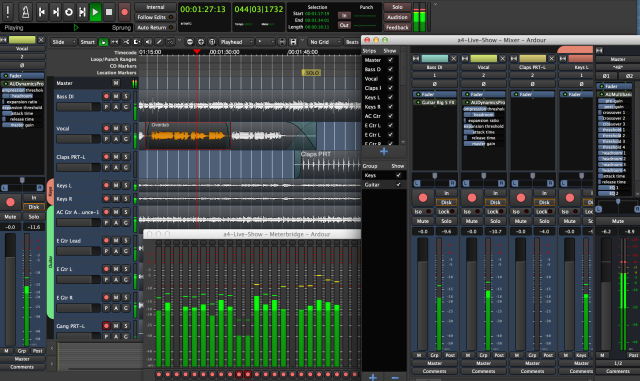
Ardour is a good digital audio workstation that can accomplish just about anything you would expect. And the best part is that it is free. The software is open-source and is developed through the effort of volunteers.
With Ardour, you can record from a microphone, hardware synthesizer, or MIDI device. You can also edit audio files, extract soundtracks from videos, mix audio, add effects, and more.
The software also has no limit on the number of channels, and no limit on undo/redo. It is also compatible with VST, LADSPA, and LV2 plugins.
Finally, Ardour is compatible with a wide range of operating systems. These include Windows XP or later (XP, Vista, 7, 8, 10) and any Mac version from macOS 10.5 (leopard) upwards. It is also compatible with Linux versions later than gilbc 2.2.5.
Price
This software is completely free. However, some optional enhancements and plugins may cost you some money.
Pros
> Non-destructive, non-linear editing capabilities
> Compatible with a wide range of plugins
> Unlimited undo/redo
> Free of charge
Cons
> A bit difficult to use and master
> No in-built instruments or effects
11. Best Audio Editing Software for Collaborations: Avid Pro Tools
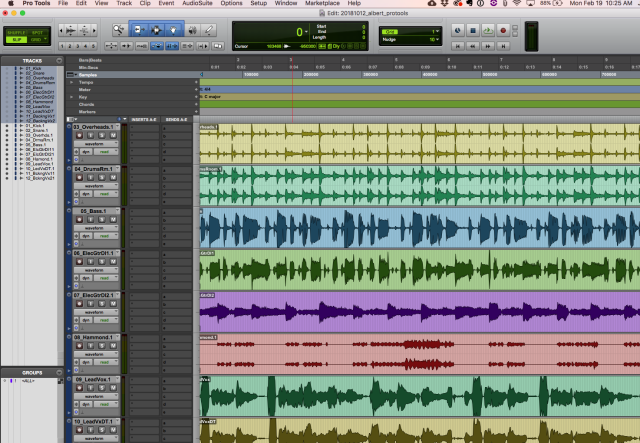
Avid Pro Tools is not just a regular audio software, it has a unique feature that sets it apart from the rest. Avid Pro Tools allows you to connect to “Avid Cloud Collaboration”, a cloud storage service that can help people in different locations work together on a project.
This exciting feature can make it possible for an audio editor in New York, a pianist in Sydney, and a singer in Rome to work together on a project as though they were in the same room.
How it works
Avid Pro Tools is packed full of features for audio editing and music production. The software has thousands of in-built instrument samples. With it, you can record from a MIDI device as well as a microphone.
Avid Pro Tools also has plenty of audio editing tools. With these, you can rework your audio tracks to perfection. You can also mix and master tracks.
But the best thing about Avid Pro Tools is the Avid Link, Avid Play, and Avid Cloud Collaboration features. Avid Link lets you find and connect with other music producers and audio professionals while Avid Play makes it easy for you to upload your work to several online audio streaming platforms.
Avid Pro Tools can be installed on any Mac device running on macOS 10.14.6, 10.15.7, and 11.5.2. You can also install the software on any 64-bit Windows 10 PC (Pro & Enterprise)
Price
Avid Pro Tools comes in three options. The first option, “Pro Tools First” is completely free. The second, “Pro Tools” is subscription-based and costs #279euros per year or #32euros per month. The third option, “Pro Tools Ultimate” is also subscription-based and costs #739euros per year and #79euros per month.
Pros
> Has powerful cloud-based collaboration feature
> Packed full of music production tools
> Has plenty of in-built instrument samples
Cons
> Too expensive
> Not compatible with VST and some other 3rd party plugins
Frequently Asked Questions
What is audio editing software?
Audio editing software can be used to record audio and perform basic editing functions. These basic functions include changing the timing of an audio clip, adjusting the volume, silencing unwanted noises, slicing, joining, introducing effects, etc.
Which is the best free audio editor?
The best free editors are Ardour and Audacity. These two are so similar and it is hard to decide which of them is the best.
But we must consider one important factor – Ardour has non-destructive editing while Audacity doesn’t. This probably makes Ardour the more preferable option.
How do I choose the best software for editing audio files?
The best audio editing software for you depends on the factors that are most important to you. When making a choice, you should ask yourself some of these questions:
How much are you willing to pay?
How much time and effort am I willing to invest in learning to use the software?
Are there some specific features I need?
Which operating systems can run the software?
The answer to questions like these will help you decide which software is most suitable for you.
Conclusion
We hope our review of audio editing software would help you know which is best for you.
We recommend Adobe Audition. From our perspective, Audition is the most complete audio editing software. Every conceivable feature that is needed for audio editing has been packed into it. And all these features and tools are arranged in a very intuitive User Interface that makes the software easy to use and master.
You really should give Adobe Audition a try. It is our Top Consumer’s Choice for a good reason.
The post 11 Best Audio Editing Software – Top Audio Editing Software Products of 2021 appeared first on Dumb Little Man.

0 Commentaires